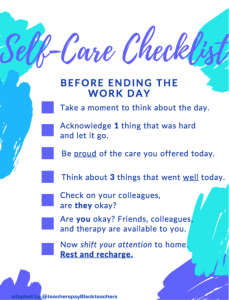Improve your Virtual Classroom with Social Emotional Learning:
10 Tips for Teachers and Students
We need social emotional learning now more than ever — but how can you teach SEL skills online? Here is a framework for understanding SEL in a virtual classroom and tips to put it into action.
by Ashley Tucker, Dean and SEL Teacher in NYC and graduate student in Summer Principals Academy at Teachers College at Columbia University
Social Emotional Learning Is Urgently Needed
Social and emotional learning or (SEL) refers to the skills that both kids and adults need to understand their emotions, cope with stress, relate to others, and form trusting relationships.
Since COVID-19 closed our school buildings in March, the experiences of adults and children have actually not been that different. We have navigated intense emotions. We have stressed about finding new ways to work effectively. We may have felt socially isolated. We have looked for new ways to connect while still maintaining social distance.
Both children and adults have experienced some form of isolation or loneliness in the months since March. We are not sure how long this pandemic or the effects will last at this point. Research suggests that the impacts of loneliness on mental health are more correlated with the duration than the intensity or type of isolation. This means that the longer the necessary restrictions last, we have to continue the conversation around mental health and the social and emotional needs of all. Both children and adults are more likely to experience higher levels of depression and anxiety during and after periods of isolation. Connection is needed now more than ever. This moment in our lifetimes implores us to prioritize mental wellness. Prioritizing mental health and social and emotional learning (SEL) acknowledges our similarities over our differences and humanizes us outside of our titles, assignments, and responsibilities. It acknowledges that we all: experience a myriad of emotions each day, are constantly coping with individual and collective stressors, and both want and need to connect to others.
In order to bring SEL to life, we as teachers need to recognize that we are more like our students than different, and that we have similar needs for a sense of belonging and safety. Students learn from people they feel safe with and like. Prioritizing relationships and cultivating joyful, safe virtual spaces is the first step in addressing students’ social and emotional needs in order to reach them academically.

Join the world’s largest emotional intelligence celebration!
- FREE lessons and resources for all ages
- Decorations included for your home or classroom
The Foundation of Safe Virtual Spaces: The 3 Rs
Dr. Pamela Cantor asserts that both our schools and homes have the possibility of being places that serve as a buffer against the stress of life. How can we cultivate safe spaces for our students within virtual classrooms? Dr. Pamela Cantor advises by focusing on the Three Rs: relationships, routines and resilience.
Dr. Cantor refers to relationships as the “active ingredient” in the classroom — they boost oxytocin and activate the portions of the brain where learning happens.
Routines can be grounding for us and provide a sense of psychological safety. As we navigate the uncertainties of life, it is important to establish routines for the things that we can control.
We can build resilience in students by celebrating their successes and creating opportunities for them to explore and discuss their strengths, weaknesses, and mindsets. (For tips on helping kids cultivate a growth mindset, check out this article).
We do not know if and when schools will fully reopen for all students. I love Dr. Cantor’s mantra,”learning has to move with the learner.” This is all the more reason for us to prioritize supporting our students’ social and emotional learning needs, even and especially, in the virtual classroom.
10 Ideas and Activities to Teach Social Emotional Learning Virtually
Here are some tips for bringing SEL to life virtually:
1 Explore self-care together
Engage in discussion with your class about self-care. Ask them to share what they do to de-stress or “feel good.” Use this Google Form to help students gain insight on self-care.
2 Host weekly movie nights to build community and discussion
Use Zoom or Google Meet to share your screen and host a movie night. There are also other applications like Netflix Party for virtual movie-watching. I create a simple flyer on Canva to build excitement and then enjoy “talking during the movie” in the chat box during the movie night!
3 Pose a Question of the Day
Pose a “Question of the Day” to break the ice each morning. They can be silly or serious– would you rather, gratitude prompts, or what’s your favorite questions. I loved my students’ answers to what sandwich they order at the deli (every New Yorker has a go-to sandwich order). Here’s a huge list of Would You Rather questions for kids.
4 Find an affirmative meme and email to a partner
There are so many positive affirmation memes and cards out there! Pair students up and make them responsible for emailing some inspiration. I also love the idea of giving one student the responsibility of sharing some inspiration each day or week at the beginning of the period and rotating through the class!
5 Keep a virtual Gratitude journal, responding to one prompt each day. Here are some examples:
- Describe a person that has had a positive impact on your life and why.
- Describe a hobby or activity that you are involved in.
- Describe a piece of music you are thankful for and why. *Then make a playlist for your students.*
- Describe a moment in your life that made you laugh at loud.
6 Host a virtual dance party.
My colleague Mr. Charles started hosting weekly dance parties during the pandemic. He used Zoom and shared his computer sound to play our students’ favorite tunes. He utilized the Poll feature in Zoom to have everyone vote for the winner. Then, he arranged with the winner’s parents to have pizza delivered to their house.

Join the world’s largest emotional intelligence celebration!
- FREE lessons and resources for all ages
- Decorations included for your home or classroom
7 Give out Weekly Awards – (Oscars, VIP, Marigolds)
It is incredibly important (now and always) to celebrate the successes of our students. Try implementing weekly or monthly awards like my colleague Ms. Morgan to celebrate accomplishments, goals met, acts of kindness, etc. Shout outs also go a long way with students- create a Google Form to facilitate them shouting each other out to build community!
8 Create space for emotional check-ins
When schools first went remote, I created a Google Check-In form for students to check in with me emotionally throughout the day. I simply asked them to share how they were feeling and why. There was also a place in the form for them to ask me to give them a phone call if needed.
9 Collaborate to solve a problem or mystery
Create opportunities for your students to depend on each other. Create an escape room, mystery assignment, or challenge to start a business. Assign roles then watch how students get engaged, work together, and solve problems together!
10 Take care of yourself!
We cannot pour from an empty cup. Make sure you are prioritizing your own emotional wellness by being intentional when it is time to shift your attention to home. Post this checklist on the door of your classroom, on the closet where you keep your belongings, or somewhere in your home office. When it is time to stop working, spend about 20 seconds reflecting on each item on the checklist. Then, shift your attention to home:

Download Free Self-Care Checklist
Just fill in the form and we’ll send you a PDF:
- Youth for Youth – Celebrating Emotional Intelligence – IGNITE POP-UP Festivals in Saudi - February 8, 2022
- Igniting Hope in our Students: Three Sparks - March 23, 2021
- 5 SEL Check-In Activities for Your Classroom - March 16, 2021


Ample unique ideas…Thank you
I will truly use these ideas as to I am very curious how it will work out in the classroom.
Useful ideas that I feel will work well in the classroom.
Very useful & exhaustive list of ideas. Loved each & every one. Hope to practice them in our school.